In the past 20 years, #monarch
#butterflies may have lost 165 million acres of habitat -- an area about the size of Texas: image via Indie @RedHouseGarden, 3 January 2015
A wonder every year this time when the monarchs returned, trembling,
wings folded limp with exhaustion after the parlous toil of the long flight,
resting in the enveloping shimmering protective silvery mystery darkness of the tall eucalypti
tenuous shelter same oceanside patch on Terrace every year a few blue eternity days
#Monarch #butterfly populations have declined by 90% over the past 20 years: image via Sonny Lê @sonnylebythebay, 1 January 2015
There are three primary threats to the monarch butterfly in its range in North America:
deforestation and degradation of forest by illegal logging of
overwintering sites in Mexico; widespread reduction of breeding habitat
in the United States due to land-use changes and the decrease of this
butterfly's main larval food plant (common milkweed [Asclepias syriaca])
associated with the use of glyphosate herbicide to kill weeds growing
in genetically engineered, herbicide-resistant crops; and periodic
extreme weather conditions throughout its range during the year, such as
severe cold or cold summer or winter temperatures. These threats
combined are responsible for the dramatic decline over the last decade
in the number of monarch butterflies in the hibernation colonies in
Mexico, which reached a 20-year low during the 2012–2013 season. From 1971 through 1999, 44% of the high-quality
overwintering forest in the monarch reserve (in 1986 the reserve
protected 16,110 ha) was estimated to have been degraded by illegal
logging.
As a result, several colonies either disappeared completely or the
number of butterflies in them decreased substantially, including
colonies near Cerro Pelón, Sierra Campanario, Cerro Altamirano, Rosario, and Sierra Chincua.
After 1999, increased production of genetically modified
glyphosate-resistant soy and maize resulted in a significant reduction
of milkweed and the loss of monarch breeding habitat in its eastern
North American breeding range.
Extreme weather conditions, which kill large numbers of butterflies and
have become much more frequent and intense over the last few years,
have severely reduced the number of butterflies migrating to Mexico in
the autumn.
Trends in Deforestation and Forest Degradation after a Decade of Monitoring in the Monarch Butterfly Biosphere Reserve in Mexico (extract): Omar Vidal, José Lopez-García and Eduardo Rendón-Salinas, Conservation Biology, 3 September 2013
Trends in Deforestation and Forest Degradation after a Decade of Monitoring in the Monarch Butterfly Biosphere Reserve in Mexico (extract): Omar Vidal, José Lopez-García and Eduardo Rendón-Salinas, Conservation Biology, 3 September 2013
After record low last year, more #Monarch butterflies return to Mexico, but now face cold: image via Yahoo @Yahoo, 30 December 2014
They just came to California from Canada, like me! #monarch #butterflies #iloveCali (photo taken by me): image via Aliya-Jasmine @aliyyajasmine, 6 January 2015
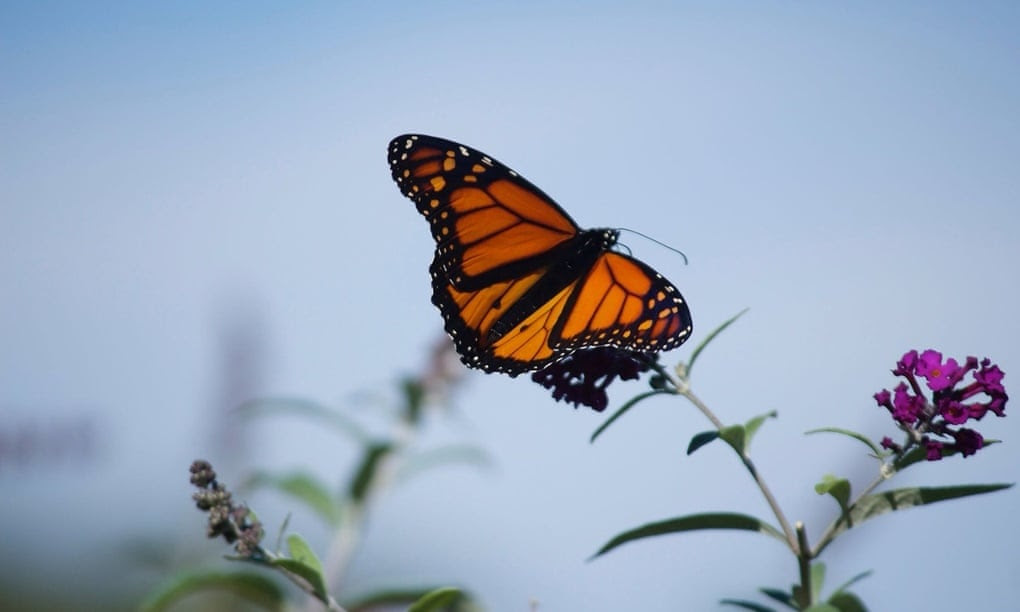
A male Monarch butterfly spotted in New York, 28 September 2014: photo by Anthony Poole /GuardianWitness via The Guardian, 6 October 2014

A female Monarch butterfly fuelling up on nectar before her long flight southwest to Mexico where she will overwinter: photo by Anthony Poole /GuardianWitness via The Guardian, 6 October 2014

Monarch butterflies prostrate on the trunks and branches of firs in the high forests in Michoacan, Mexico, after travelling more than 2,500 miles from Canada and the United States: photo by Hugo Ortu/Corbis via the Guardian, 2 January 2015

Monarch butterflies prostrate on the trunks and branches of firs in the high forests in Michoacan, Mexico, after travelling more than 2,500 miles from Canada and the United States: photo by Hugo Ortu/Corbis via the Guardian, 2 January 2015

Monarch butterflies gather on a tree at the El Rosario Butterfly Sanctuary near Angangueo, Mexico: photo by Kirsten Luce/AP via The Guardian, 29 January 2014

A Monarch butterfly perches on a tree at the Sierra Chincua Sanctuary in the mountains of Mexico's Michoacan state. Populations have plunged, new figures show: photo by Marco Ugarte/AP via The Guardian 29 January 2014
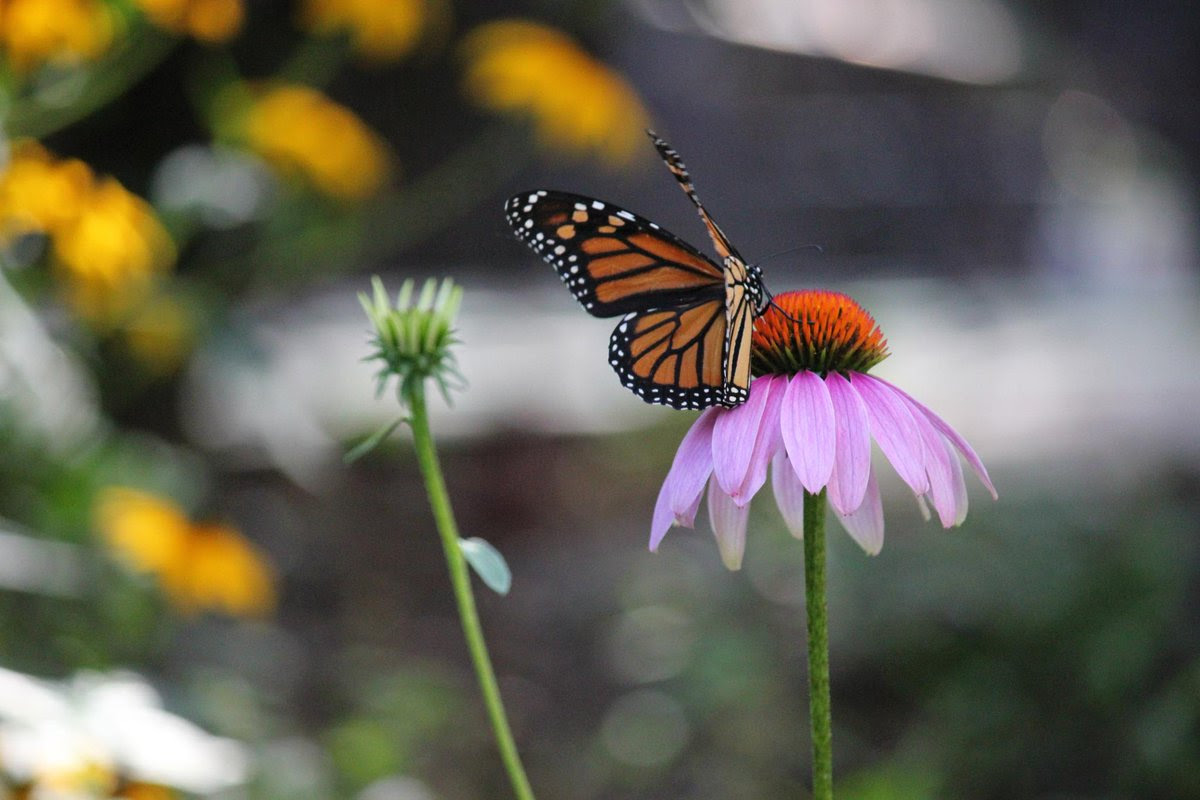

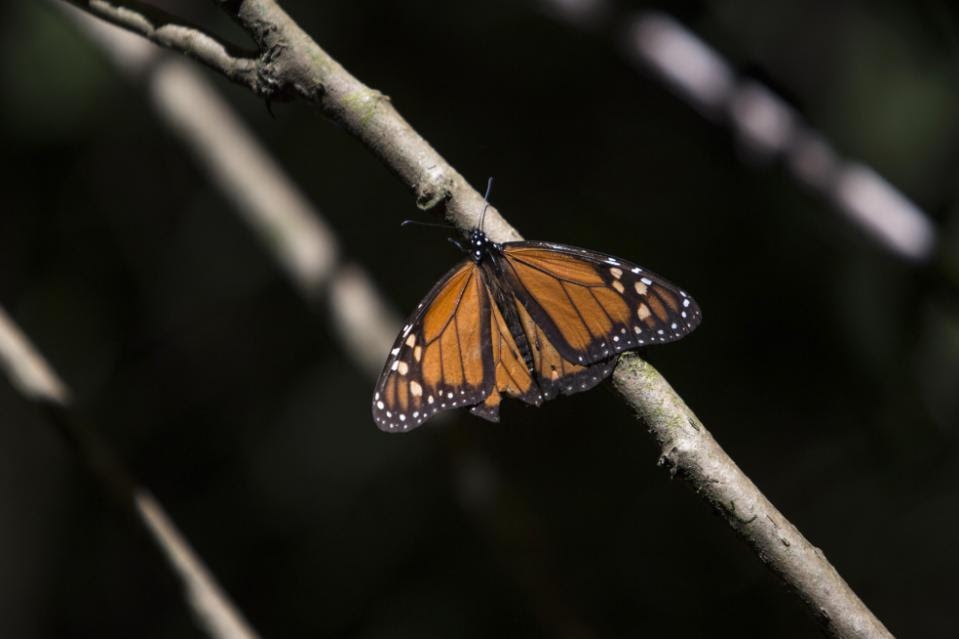
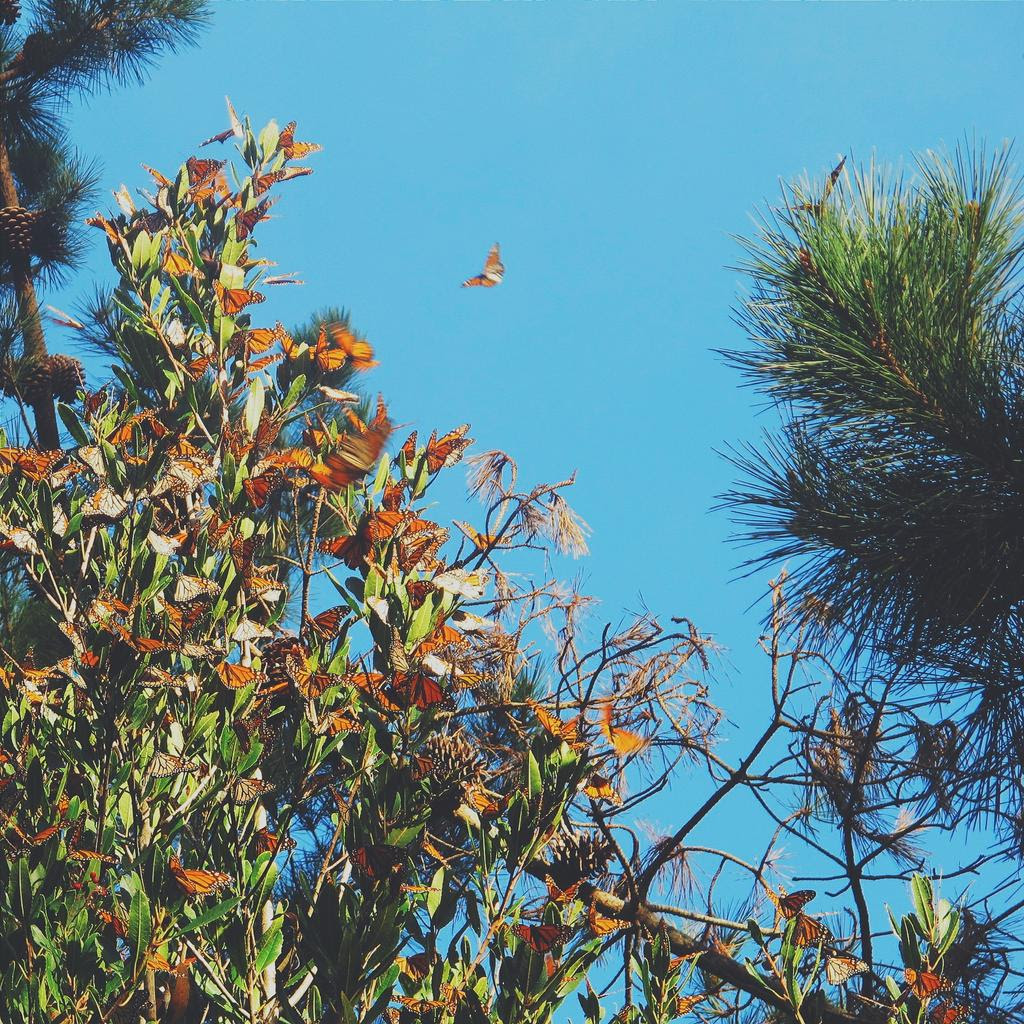
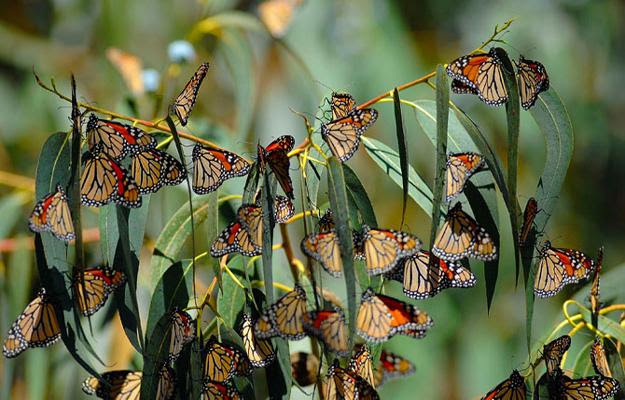




3 comments:
The Incredible story of the Monarch Butterfly: Four Wings and a Prayer (2014)
Tenuous shelter - not much else these days.
I've noticed the drop in numbers of British species in my lifetime. Horrible.
That these remarkable insects, weighing between one-fourth and three-fourths of an ounce, with a wingspan of less than four inches, and a lifespan of only six to eight months, should be able to manage journeys of up to 3000 miles, is astonishing enough, and that's not even to consider the facts that "only monarchs born in late summer or early fall make the migration, and they make only one round trip; by the time next year's winter migration begins, several summer generations will have lived and died and it will be last year's migrators' great grandchildren that make the trip; yet somehow these new generations know the way, and follow the same routes their ancestors took -- sometimes even returning to the same tree" (National Geographic).
But who needs a creature like that on a planet whose dominant inhabitants believe there is a far greater need for GMO crops, herbicides, commercial logging, massive deforestation and destruction of any given remaining bits of natural environment, if there's a dollar in it for somebody.
The little four-line elegy recalls a time a half century ago in a small coastal fishing village that is now an enclave of the very rich, though hopefully it remains a seasonal stopover on the long Western flyway for the monarchs. They deserve a break.
Post a Comment